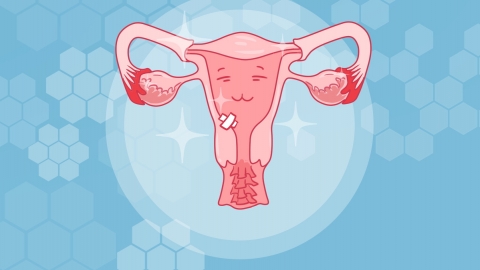What is the difference between the uterus and the cervix?
Under normal circumstances, the uterus and cervix differ significantly in terms of location, structure, tissue composition, function, and common diseases. A detailed analysis is as follows:
1. Location
The uterus is located centrally within the pelvic cavity, anterior to the bladder and posterior to the rectum, with its lower end connected to the vagina. It is a hollow muscular organ shaped like an inverted pear and occupies a central position in the female reproductive system. The cervix is part of the uterus, specifically located at its lower end, connecting the uterine body with the vagina. It serves as the passage between the uterus and the vagina and is positioned relatively lower, at the junction of the uterus and vagina.
2. Structure
The uterus consists of two parts: the uterine body and the cervix. The uterine body is broader and larger, with a thicker wall. The cervix is narrower and cylindrical in shape. Its inner cavity is called the cervical canal, which is lined with columnar epithelium internally, while its external opening connects with the vagina and is covered by squamous epithelium. The junction of these two types of epithelium is a common site for cervical cancer.
3. Tissue Composition
The uterine muscular layer is mainly composed of smooth muscle, which has strong contractile ability. The cervix is primarily composed of fibrous tissue and is highly elastic. During pregnancy, it gradually softens and dilates to accommodate the demands of childbirth.

4. Function
The uterus is the organ responsible for housing the embryo and fetus and for producing menstruation. During the reproductive years, the endometrium undergoes cyclical thickening and shedding under the influence of hormones, resulting in menstruation. The primary function of the cervix is to serve as a passage between the uterus and the vagina. During non-pregnancy periods, the cervical canal secretes mucus that forms a mucous plug, preventing pathogens from entering the uterine cavity and providing protective functions.
5. Common Diseases
Common uterine diseases include uterine fibroids, endometrial polyps, endometritis, endometrial cancer, and adenomyosis. These diseases are mostly related to the smooth muscle and endometrial tissues of the uterine body and may affect menstruation or fertility. Common cervical diseases include cervicitis, cervical polyps, and cervical cancer. These conditions primarily occur in cervical tissues and may present symptoms such as abnormal vaginal discharge or contact bleeding.
The cervix is part of the uterus. The two are closely related yet distinct in location, structure, and function, both playing very important roles in female reproductive health. Regular gynecological examinations help detect abnormalities in both the uterus and cervix promptly, thus maintaining reproductive health.





